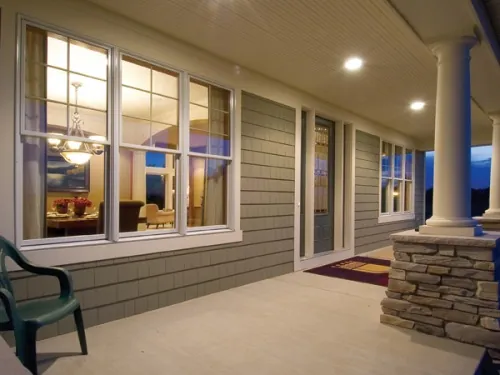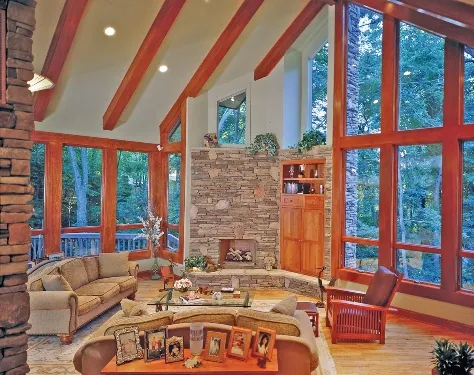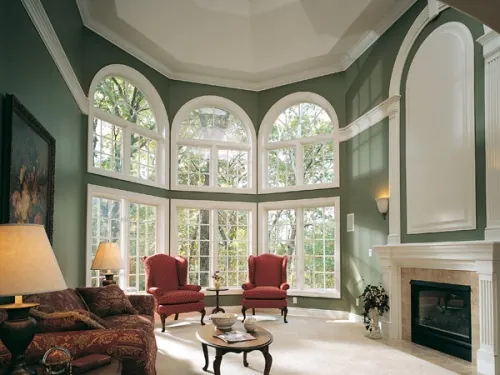 by Leslie Patterson
by Leslie Patterson
Your home's windows bring warmth, light, and fresh views to any room, while also providing necessary ventilation and important emergency exits.

View this House Plan
Though windows are a basic feature of all home construction, there is more to choosing a window than you may think. Glass, frames, size and most importantly, the configuration of your windows all need to be considered before you purchase.
Fixed
Fixed windows are also known as picture windows and are not operable. This allows fixed windows to be customized into numerous unusual shapes, perfect for accents and views. They are more inexpensive and energy efficient than many windows available.
Double and Single Hung
Double hung windows have two windowpanes that are both operable. The bottom sash can be raised or the upper sash can be lowered, providing double the ventilation options. Single hung windows look nearly identical to double hung with only the bottom sash operable, making them slightly less expensive.

View this House Plan
View Other Modern House Plans
Casement
Casement windows open outward with hinges on one side and a crank handle on the opposite side. These windows open fully, providing great ventilation where windows are desired but difficult to access, like above the kitchen sink. Casement windows are the most expensive configuration and are potentially hazardous on lower floors, so place them cautiously.
Awning & Hopper
Awning windows are hinged on the top with the bottom opening outward at a 30-degree angle. Typically used in contemporary styled homes, these windows are most often placed above doors or other windows. Though the ventilation provided is minimal, these windows can be left open on rainy days unlike other configurations. Hoppers are the opposite, hinged on the bottom and opening inward.
Bay & Bow
Bay windows have three or more panes that join by angling away from the home. Bow windows are similarly styled, providing a curved appearance.
Now that you have an idea of popular window arrangements, becoming familiar with glass and frame options will make shopping for windows less stressful.
Glass
White clear glass has been the standard for windows, with new technology ever increasing efficiency. This is extremely important as many homes lose up to 30 percent of heating and cooling through the windows. Double and triple glazed glass increase insulation and are ideal for homes exposed to extreme temperatures. Low-E (low emissivity) glass is growing in demand as one of the most energy efficient window materials available. A microscopically thin layer of silver coating is applied to low-E glass, aiding the efficiency and cutting back exposure to harmful UV rays. Other means of customizing glass include various colors and textures, laminated glass that reduces noise, and extra strong tempered glass that prevents dangerous shattering.

View this House Plan
Frames
Aluminum frames are great for customized window designs but are susceptible to heat loss and damaging condensation. Wood frames have high insulation values and are unaffected by extreme temperatures. They can require some maintenance to prevent warping and sticking. Vinyl is easily customized, widely available in many styles, and quite affordable, making them the top choice in much home construction.
Knowing these window basics before jumping into purchasing will alleviate confusion and stress during this phase of building. Remember to ask about weather stripping and efficiency recommendations for your area. Soon you can enjoy the daily paper while basking in the light from your dream home's new windows.
Here are some related articles:
Save this article to:
back to top